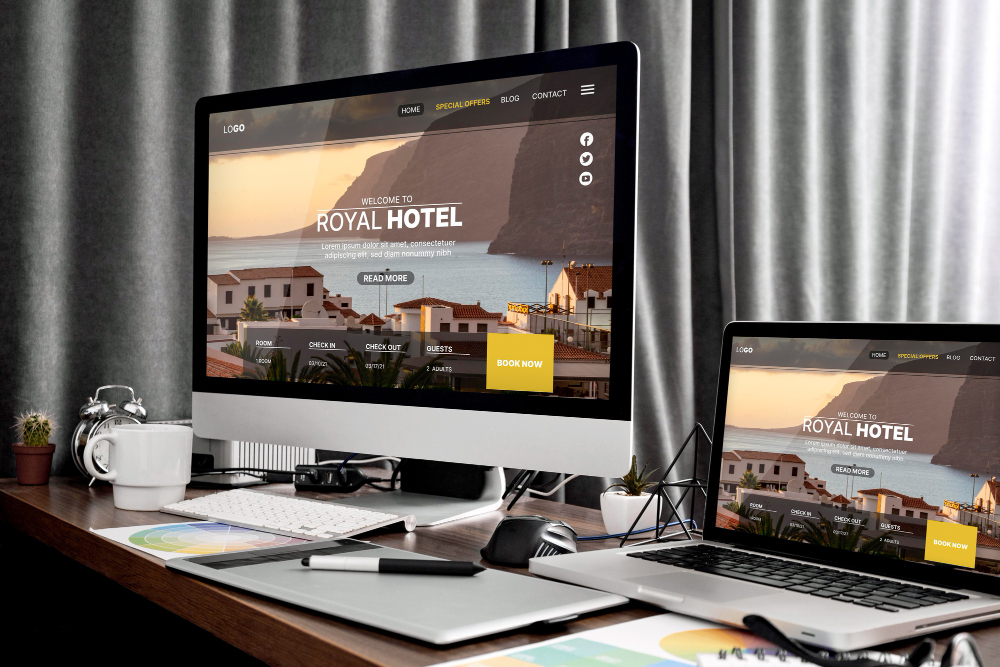Why Cross-Browser Compatibility Matters in Web Design

Picture this: your beautifully designed website looks stunning on your Chrome browser, but when a visitor opens it in Safari or Firefox, the layout breaks, the fonts look off, or, even worse, it refuses to load properly. This is the challenge posed by inconsistent cross-browser compatibility, an often-overlooked but crucial aspect of web design.
This blog will explore what cross-browser compatibility is, why it matters for your website, how to address it effectively, and the benefits of incorporating it into your web design process. By the end of this post, you’ll understand why it’s not just a technicality but a necessity in creating a seamless user experience.
What Is Cross-Browser Compatibility?
At its core, cross-browser compatibility ensures that a website performs consistently across various web browsers, such as Chrome, Firefox, Safari, Edge, and others. It also extends to different devices (desktop, tablet, mobile) and operating systems (Windows, macOS, etc.).
Because each browser renders code differently, a web design element that works perfectly in one browser may appear broken or behave unpredictably in another. To achieve cross-browser compatibility, web developers must test and tweak their designs to ensure users get the same smooth experience, no matter their browser of choice.
Why Cross-Browser Compatibility Is a Must in Web Design
Reach a Wider Audience
The internet is a diverse ecosystem, and users access websites through a multitude of browsers and devices. While Chrome may dominate the browser market, millions of users still rely on Safari, Microsoft Edge, or smaller browsers like Opera. If your website isn’t optimized for these platforms, you risk alienating a significant portion of your audience.
According to StatCounter, around 35% of web users globally rely on browsers other than Chrome. If your website is incompatible with these platforms, you could potentially miss out on over 1 in 3 visitors.
Boost User Experience
Imagine visiting a website where buttons don’t click, text overlaps, or images load out of proportion. Chances are, you’d leave immediately. That’s exactly what happens when a website isn’t designed for cross-browser functionality. A poor user experience directly results in higher bounce rates and weaker engagement metrics, which can ultimately harm your brand's reputation.
SEO Impact
Search engines reward websites that provide an excellent user experience. If visitors leave quickly due to usability issues related to browser compatibility, this can negatively impact your search engine rankings. A lower ranking means less traffic to your website, which can affect your business’s bottom line.
Stay Competitive
User expectations are higher than ever, and websites that don’t deliver a polished, professional experience risk losing customers to competitors. Cross-browser compatibility ensures you remain relevant and competitive in an increasingly crowded digital marketplace.
Essential Steps to Ensure Cross-Browser Compatibility
If you’re creating or updating your website to enhance its user experience, here’s how you can incorporate cross-browser compatibility into your web design process:
1. Use Standard-Compliant Code
Web standards set by the World Wide Web Consortium (W3C) serve as the foundation for web design. Ensuring your website follows these standards reduces the likelihood of browser-specific errors and improves consistency across platforms. Utilizing semantic HTML5 and CSS3 coding ensures that your website stays compatible with modern browsers.
2. Choose a Responsive Design Framework
Frameworks like Bootstrap or Foundation simplify the process of creating websites that look amazing on browsers of all shapes and sizes. These frameworks offer pre-built design blocks and functionality optimized for compatibility, which can save you time in development.
3. Test Across Multiple Browsers and Devices
Testing is arguably the most important step, but it often gets overlooked. Here’s how you can make it part of your workflow:
- Use free tools like BrowserStack or CrossBrowserTesting to check your site’s compatibility.
- Test your website on various operating systems, browsers, and devices to identify potential issues.
- Don’t forget to test older browser versions. While new browsers often auto-update, certain users may still rely on outdated versions.
4. Leverage Progressive Enhancement
Progressive enhancement ensures that your website’s core features are accessible on all browsers, while additional functionalities cater to more advanced browsers. For instance, you can create a basic website layout using HTML and CSS, then enhance it with JavaScript for browsers that support these interactions.
5. Minimize Browser-Specific Code
Wherever possible, avoid relying too heavily on browser-specific properties. While hacks and vendor prefixes (like -webkit, -moz) can solve certain design issues, excessive usage can complicate maintenance and cause unexpected problems in other browsers.
6. Focus on Speed
Page speed plays a big role in compatibility. Compress your images, use efficient CSS/JavaScript coding techniques, and leverage Content Delivery Networks (CDNs) to ensure fast load times across browsers. Tools like Google’s PageSpeed Insights can help identify areas where your site can be optimized.
Benefits of Prioritizing Cross-Browser Compatibility
Increase in Traffic
When your website is optimized for all browsers, it attracts and retains more visitors, resulting in higher traffic and better conversion rates.
Enhanced Credibility
A polished, professional-looking website builds trust with your visitors and strengthens your brand identity. It sends a message that attention to detail matters to your organization.
Improved Accessibility
By ensuring compatibility, you create opportunities to serve a more diverse audience, including those using assistive technologies. This aligns with accessibility mandates and promotes inclusivity.
Longer Lifespan for Your Website
Web technologies evolve rapidly, but a cross-browser-compatible design ensures your website remains functional and relevant for a longer period, saving time and money on frequent updates.
Take the Next Step in Modern Web Design
Cross-browser compatibility isn’t just about fixing technical quirks; it’s about offering a seamless, inclusive experience for all users. By implementing the steps above, you’ll not only future-proof your web design but also strengthen your online presence.
At REK Marketing & Design, we specialize in creating stunning, functional, and cross-browser compatible websites tailored to your business needs. Don’t leave your audience frustrated with usability issues. Contact REK Marketing & Design today for professional web design services that get it right the first time.